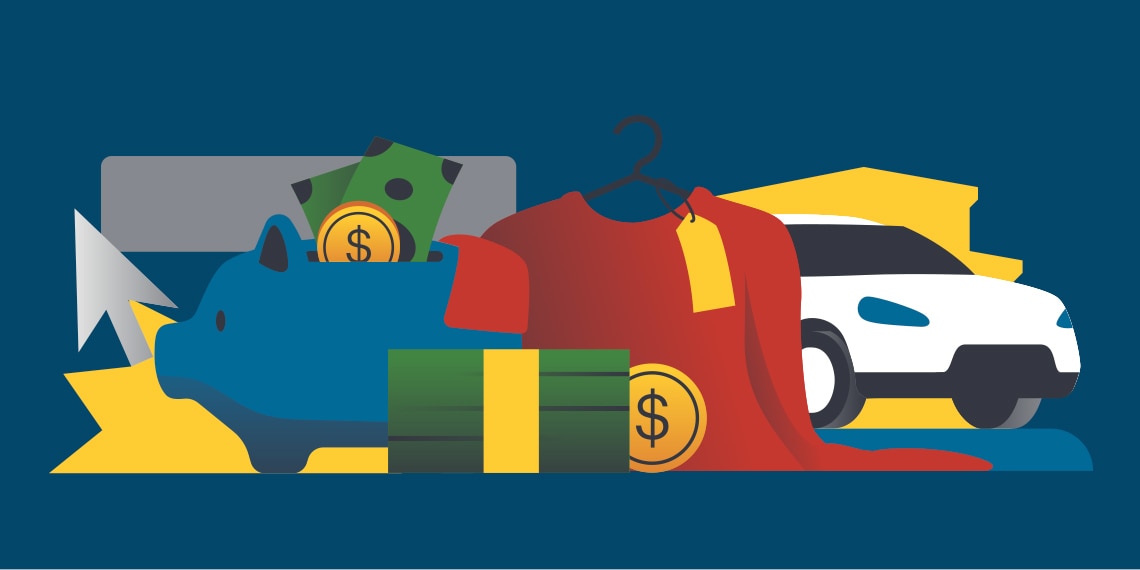
Yes, $3,000 might sound like a daunting figure, but stashing away that much in one calendar year is doable with some planning and discipline.
Overall, setting aside $3,000 in a year will force you to make a real, candid assessment of how you use your money. By focusing on your spending and saving over the course of a year, you’ll be able to see how even small month-to-month changes in your budget can help you to better align your spending to your values and goals. And, after two years of the pandemic, setting a savings goal might be just the thing you need to reset your budget for the so-called new normal.
Unlike aiming for a smaller target over a shorter time period, such as coming up with $500 in just a month, saving over the course of a year can prompt you to change your financial habits—and that alone could be more valuable over the long-term than the savings themselves.
So how do you come up with $3,000 in a year? Try these psychological strategies and practical tips.
Actually Name Your Goal
If you’ve ever wondered why financial advisors spend so much time talking about creating money goals, consider that savings habits are as much about psychology as they are about finances.
Doesn’t the goal of “Hawaii” sound more enticing—and therefore, more motivating—than just shooting for $3,000? “Setting a goal is imperative for you to psychologically embrace it,” says Kitty Bressington, CFP and founding principal of Linden Financial Consultants, an independent financial planning and investment consulting firm in Rochester, NY. Choose a goal for your future $3,000, name it and get started.
Your top priority might just be a cash reserve or emergency fund (and good for you if it is!). With all the recent pandemic-related economic uncertainty, many people may have spent down their emergency funds, or realized how much they needed one. It’s not flashy or exciting, but “sleeping at night” is as good a goal as any, and $3,000 is a solid start of a cash reserve.
Break It Down
If just thinking of saving thousands of dollars makes you break out in a sweat, you’re not alone. That’s why experts recommend segmenting the amount you need to save over the course of a month or a week or even a day to make it more manageable.
Could you save $50 bucks a week, for example? Or $15 a day? “You have a completely different reaction if I say $15 bucks versus $3,000,” says Bressington. “Break the total down into bits and pieces—everybody can do bits and pieces.” In order to make your $3,000 goal, you would need to put away a measly $8.22 a day.
Set Up Automatic Savings
After you’ve determined what daily, weekly or monthly amount to save, use an automatic savings feature to have the money deposited directly into a designated high yield savings account.
The simple logic here is that you can’t spend what never hits your checking account. “I would have that money taken out of my paycheck and put into a completely different bank account,” says Bressington. That savings account, she says, should be truly separate from your checking account—say, at another bank entirely. Banking apps make our lives easier, but having your savings and checking accounts at one bank also makes it easy to simply swipe savings back into checking.
Take a Deep Dive into Your Cash Flow
As when saving for a smaller amount, the real magic is in making sure that spending is mindful, says Bressington.
We may be talking about making seemingly small changes to your spending habits—such as cutting out one restaurant meal a week to hit that $50 mini-goal—but at the core of those actions is the concept of mindfulness, says Bressington. If you’re at the $3,000 savings goal level, presumably you’ve already tracked your spending and made deep cuts that allow you to put money away.
If you’re still coming up a little short, Bressington recommends trying the following:
● Shop your insurance. Bressington notes that policies change all the time, so to make sure you’re getting the best coverage for your situation, speak to an independent agent every three years about your homeowners, rental, auto and umbrella policies. If all the drivers on your car insurance policy take a driver’s course every other year, you could save around 10% on your auto insurance.
● Don’t upgrade. New phones, ad-free subscription services and new clothes are tempting, but they’re also a perfect example of the “lifestyle creep” that can steal vital dollars from your budget. Instead of getting the latest phone at $1,000 a pop, try replacing the aging battery and case for less than a tenth of the cost. Shop your closet or sell items to consignment to raise cash for new threads. Barter skills with a friend to get things done for less.
● Combine efforts. Share a warehouse membership (and the bulk items you buy there) with extended family or a family composed of friends. Share subscriptions or cellular plans across households. See if you can team up with neighbors to get a deal for one mowing service to do the whole street. “That way, you take advantage of discounts that lower everyone’s bills,” says Bressington.
If that sounds almost too easy—well, saving money doesn’t have to be deprivation, but rather focusing your funds where they are needed most. Small changes can free up dollars for your goals, says Bressington. “That’s what people forget—shaving here and there adds up over time.”
Julie Anne Russell is a Brooklyn-based freelance journalist. She writes on personal finance, small business, travel and more.
Illustration by Nick Slater.
Your savings journey is just that, a journey. To achieve your savings goal, consider participating in a saving challenge to make it fun, all while being proactive in adopting new habits. Learn more about various innovative savings challenges and get started today.
LEARN MORE: How to Save Money by Organizing Your Finances

